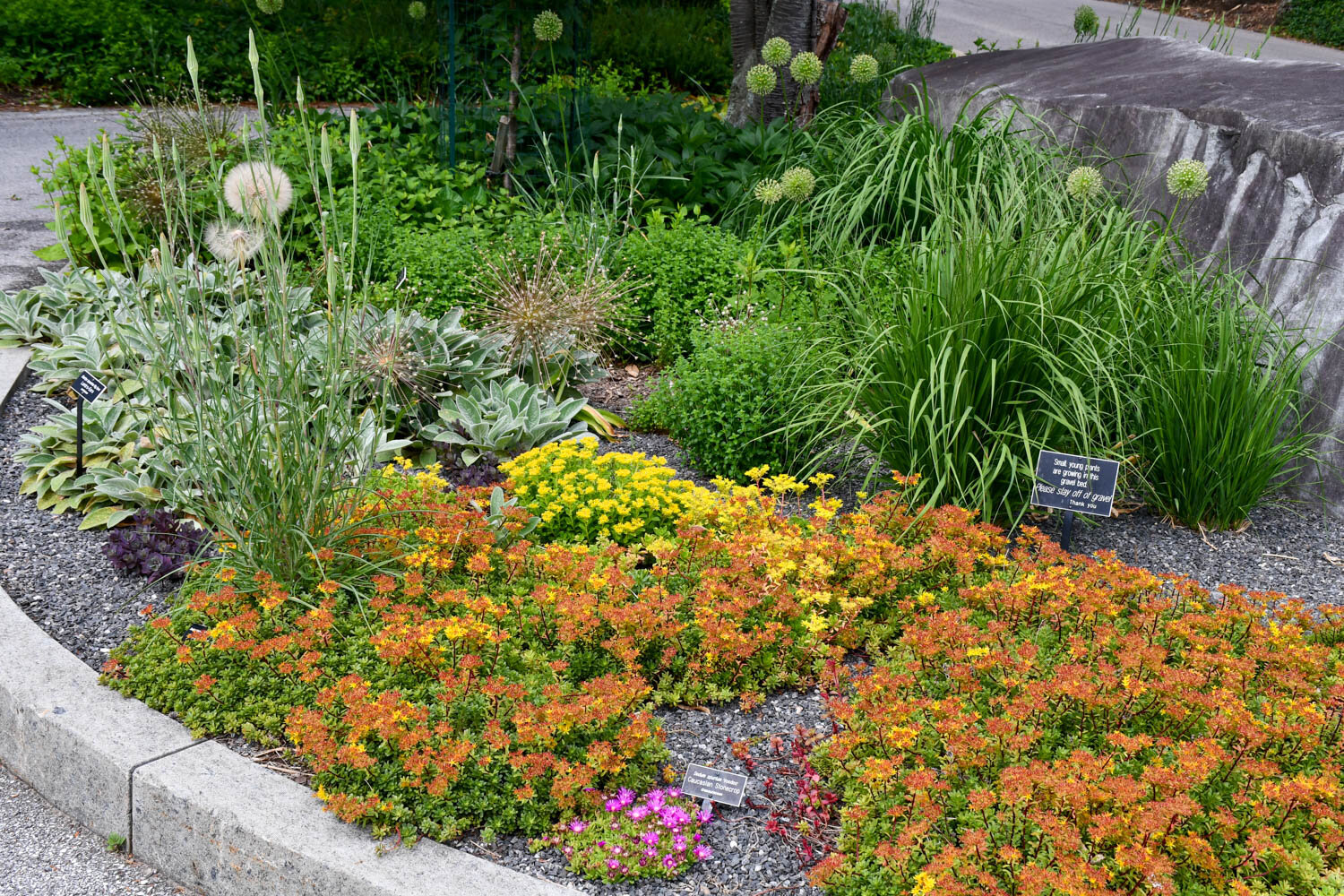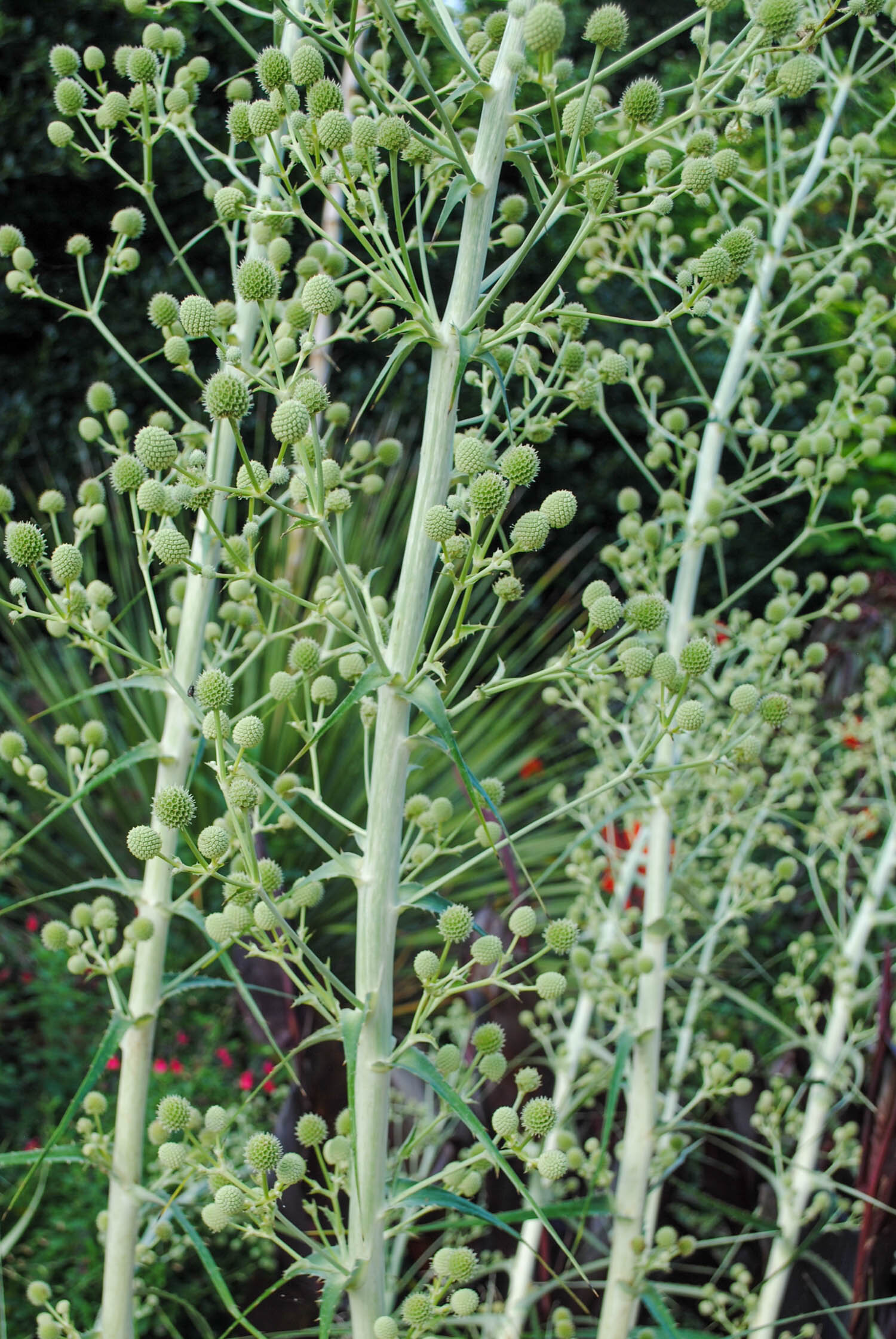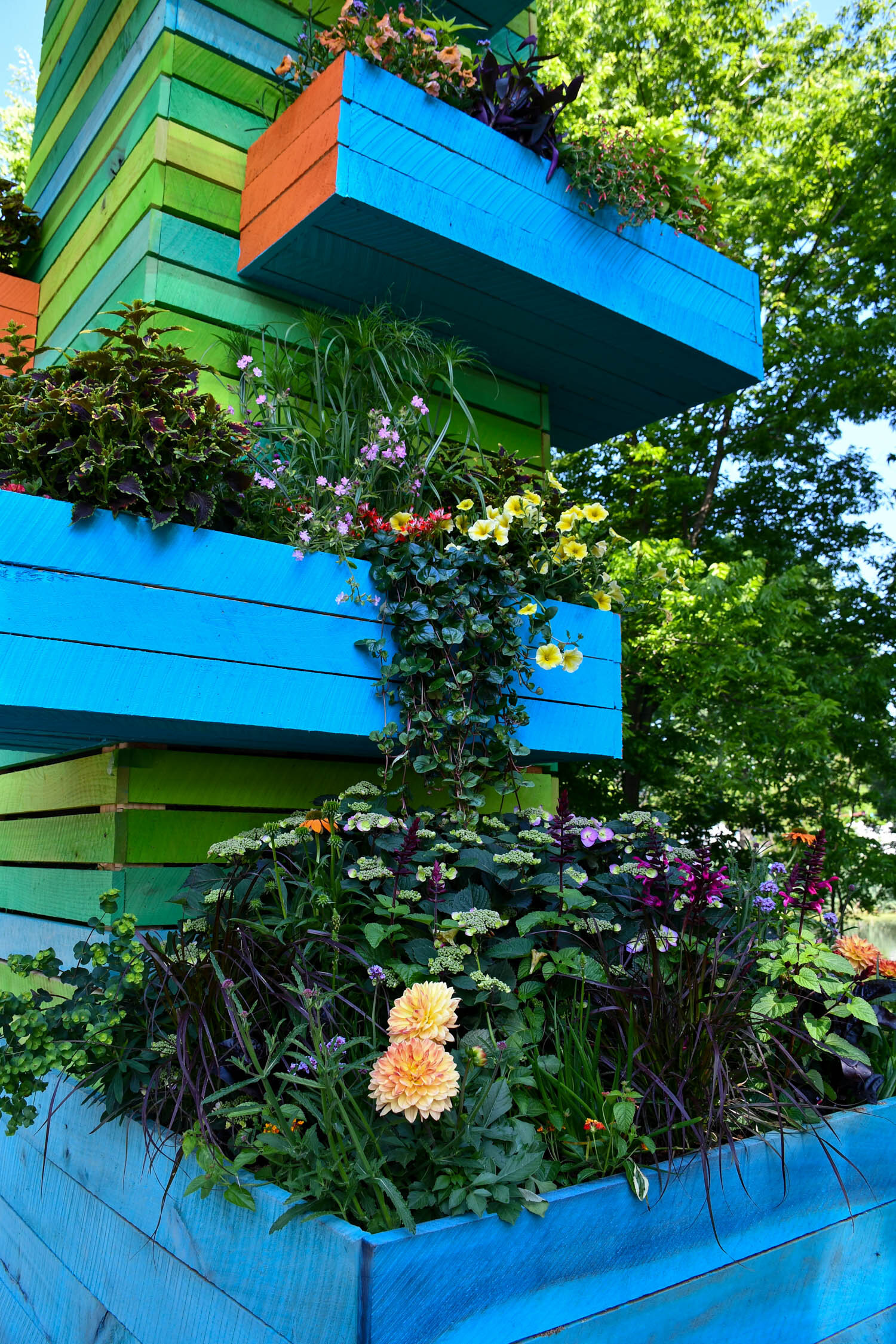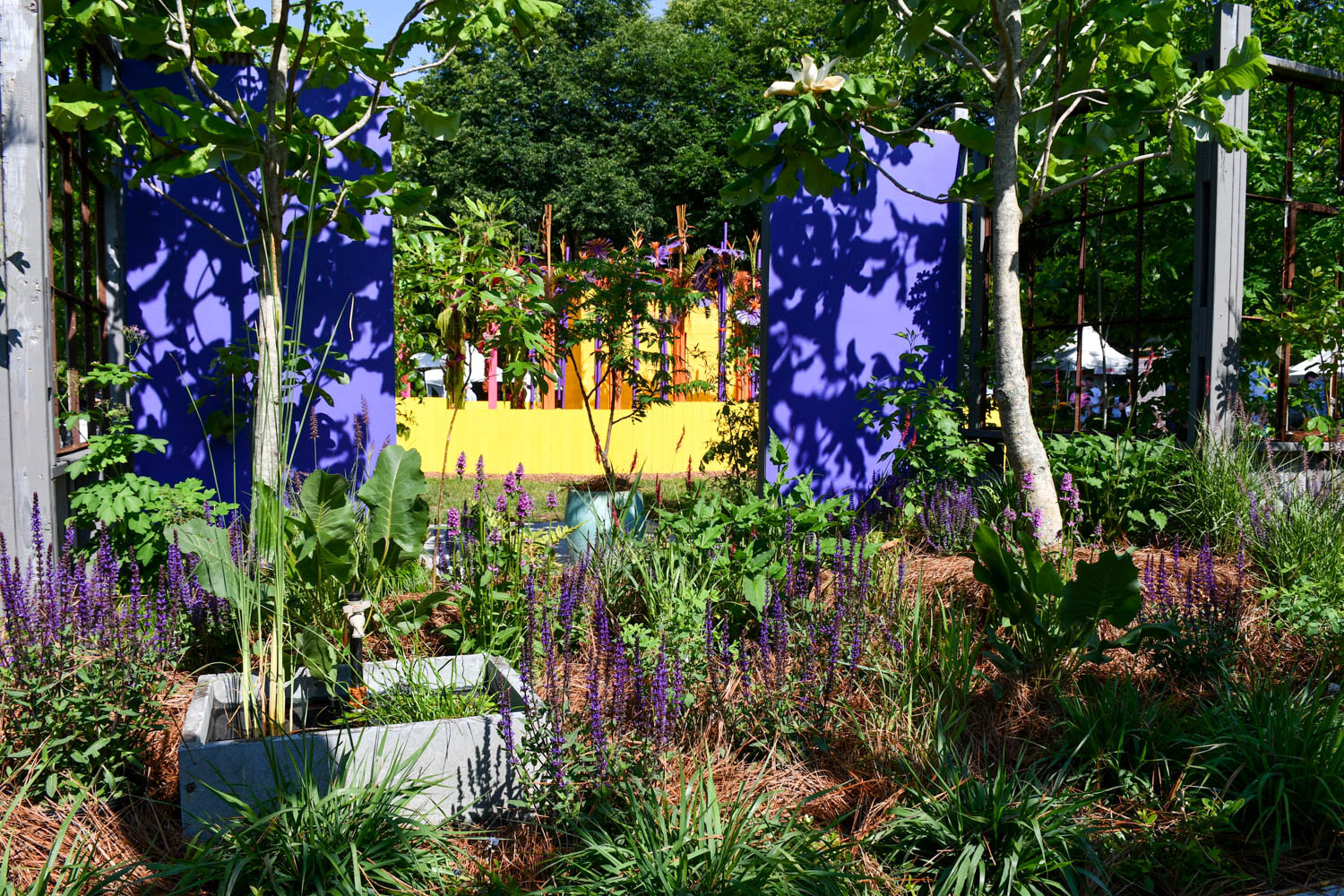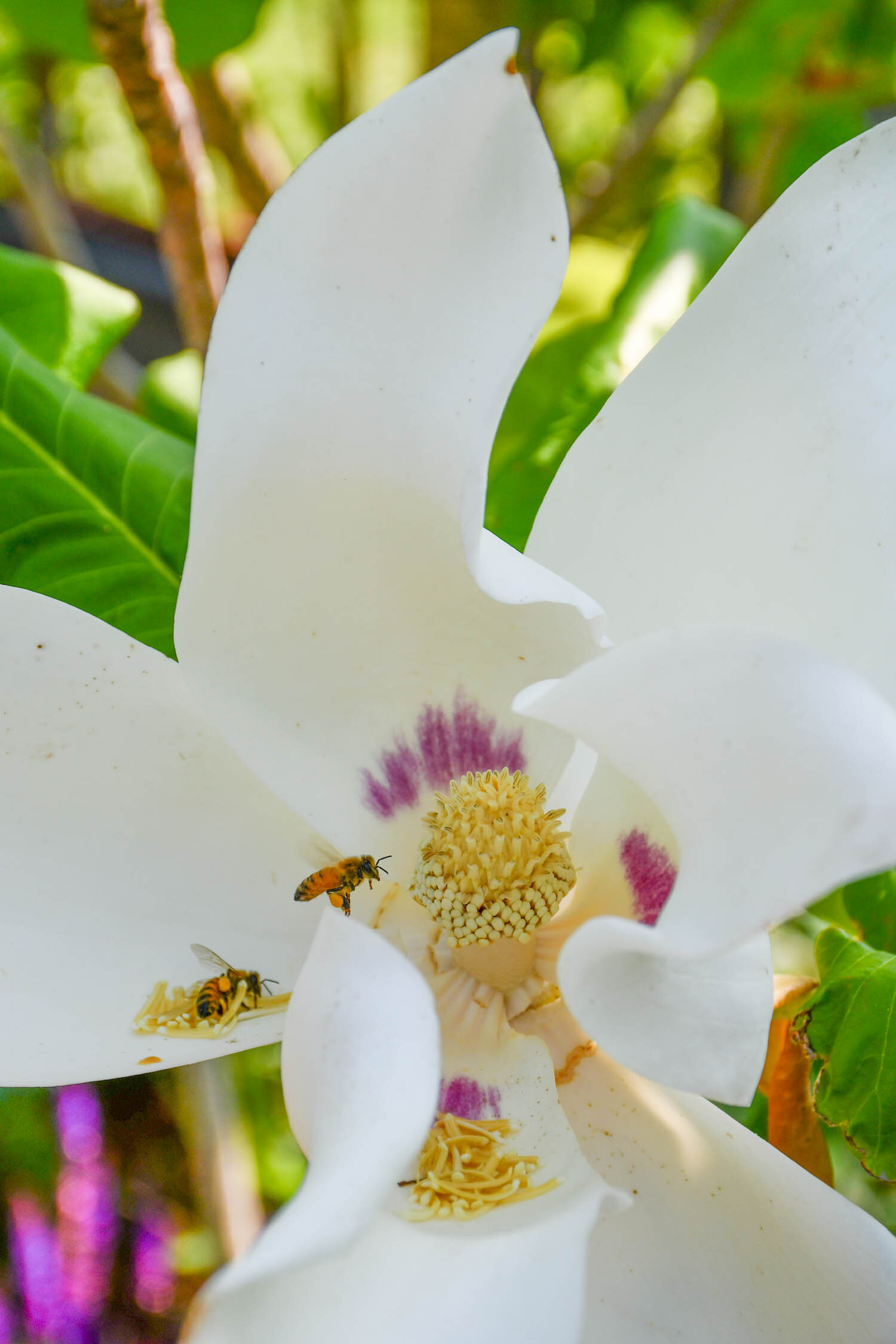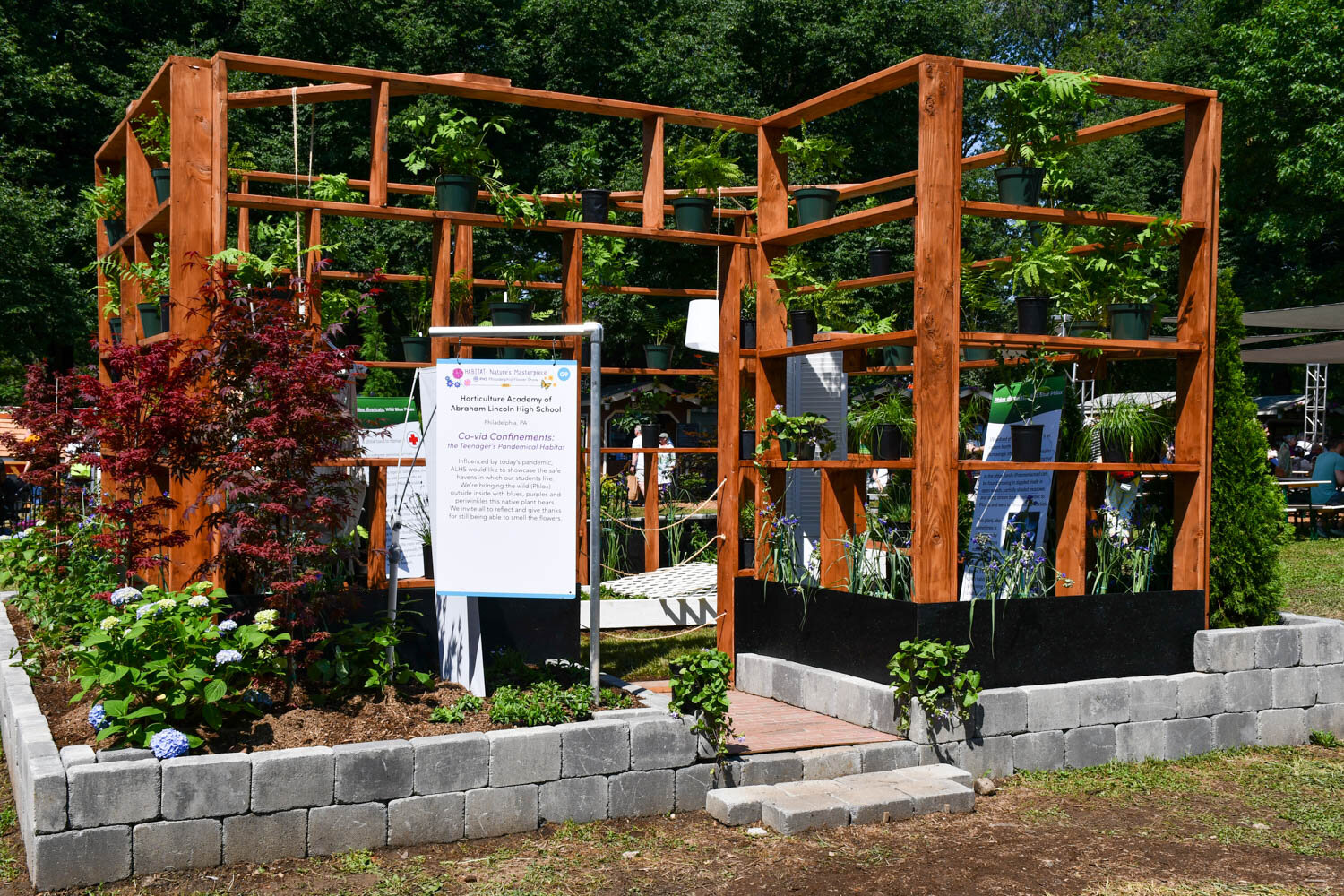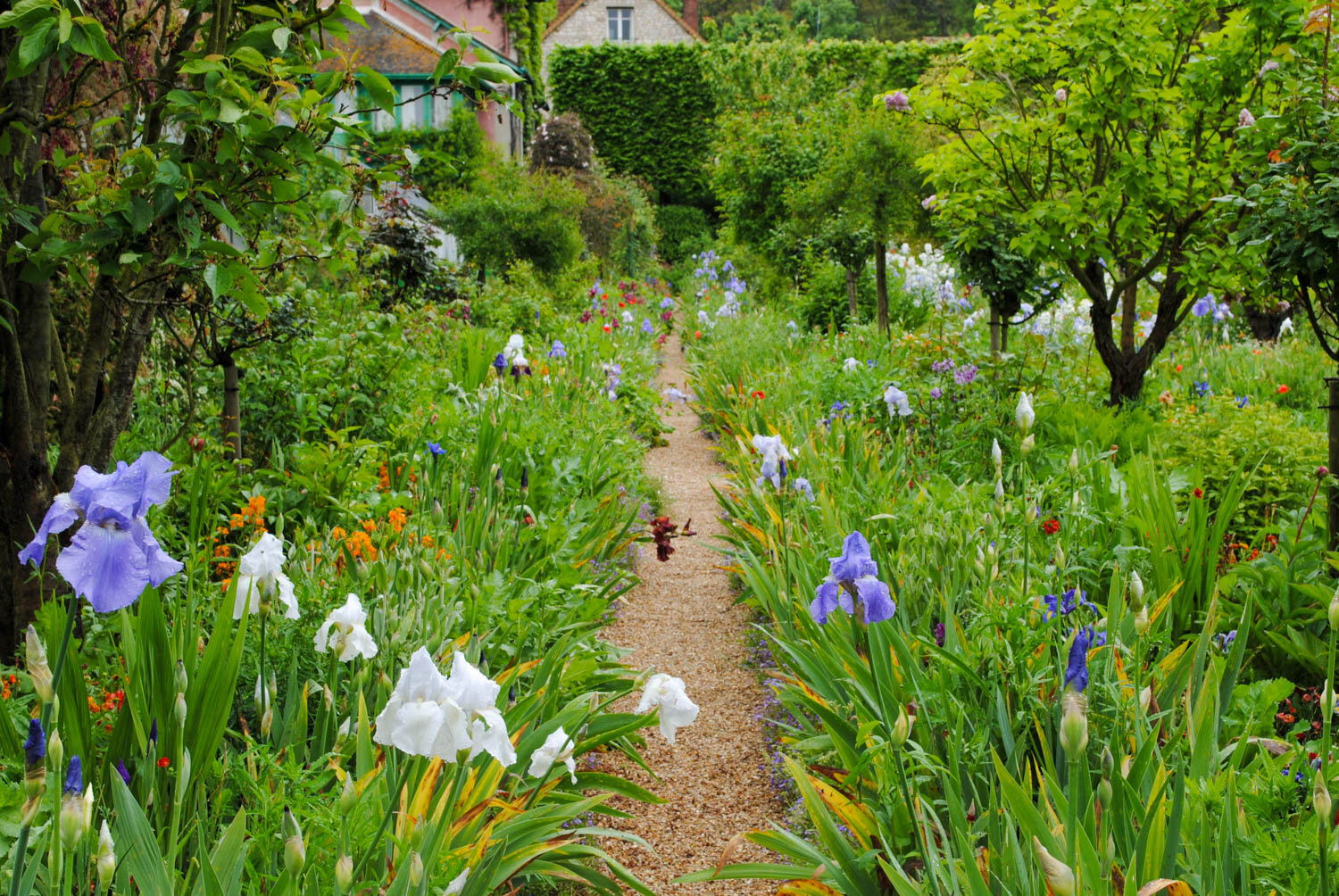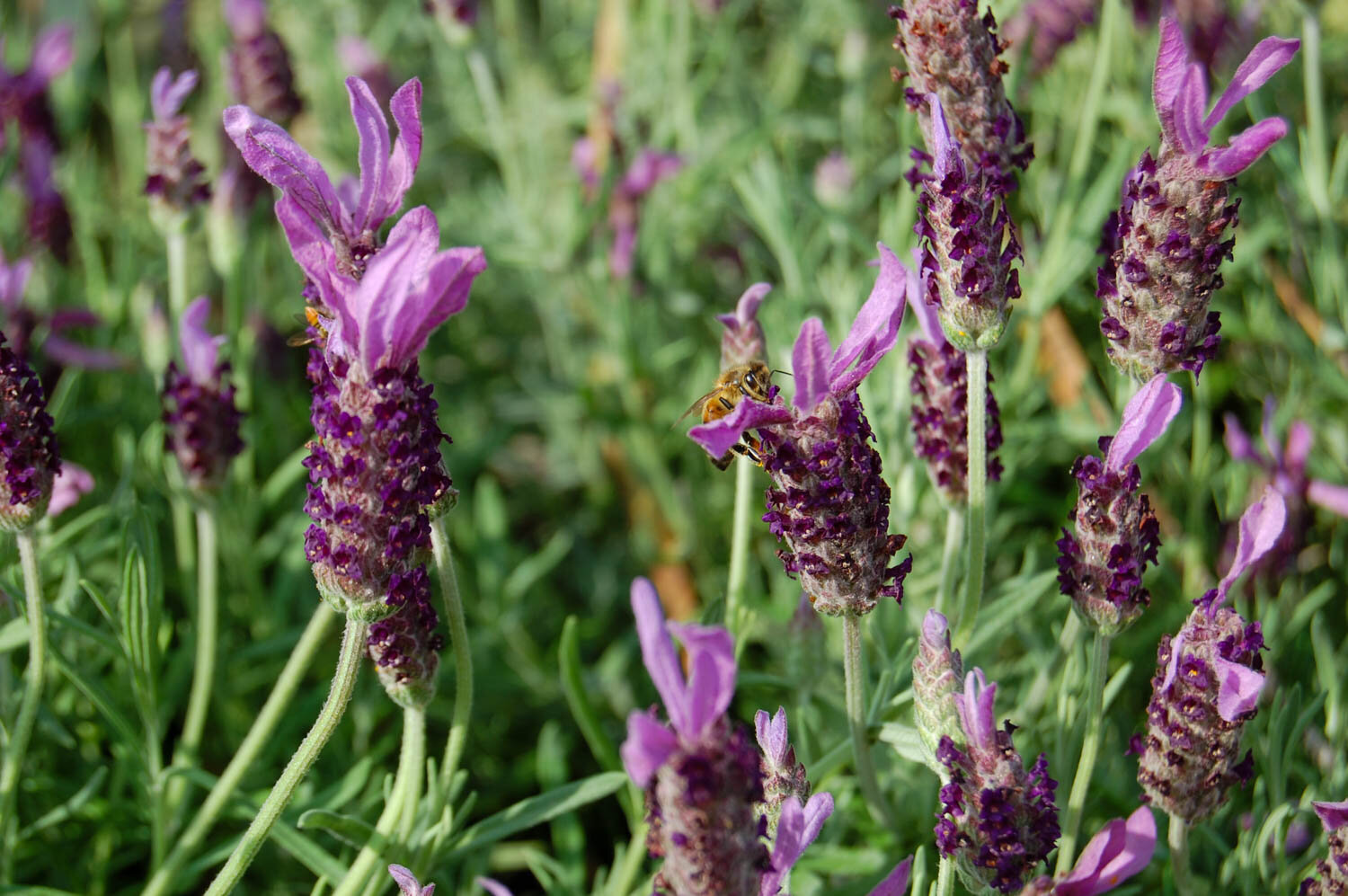This is Part 2 of 2 of a series looking back at our June trip to visit The Scott Arboretum of Swarthmore College. To read part 1 about our morning time there, click here.
Karen and I left The Scott Arboretum for lunch and made a pit stop to see the gravel gardens on the traffic circle near campus. I was very intrigued to see these plantings because my students and I had just installed a gravel garden at SFA. These gravel gardens were developed to help slow traffic, increase the beauty of the area, and be low maintenance since the grit reduces weed seed germination.
Cassian Schmidt, director of Hermannshof Garden and leader in designing for plant stress to minimize maintenance, consulted on the project when he taught a workshop on the subject a few years ago for the arboretum. It sounds like they took an approach similar to what we are doing, start small and then expand outward. You can read more about The Scott Arboretum’s gravel gardens here, here, and here, and they have an educational video on the subject as well.
The center planting in the traffic circle features herbaceous perennials like Allium ‘Ambassador’ and Salvia × sylvestris ‘Blauhügel’ around Juniperus virginiana ‘Corcorcor’ Emerald Sentinel and Gymnocladus dioicus ‘Espresso-JFS’ Espresso. Research has demonstrated that people slow down when driving through roundabouts if trees are included in the planting mix.
A close up of the herbaceous layer with Salvia × sylvestris ‘Blauhügel’ and Allium ‘Ambassador’ in bloom
The beds surrounding the roundabout featured more perennials. The round mound Baptisia had already finished, and Asclepias tuberosa and Coreopsis verticillata 'Zagreb' were just beginning to bloom.
Here the spacing between the gravel garden plants is better seen. Again, Asclepias tuberosa and Coreopsis verticillata 'Zagreb' are in bloom, and I spy Liatris and Symphyotrichum rising for later in the year.
The island beds featured a mix of even shorter plants like yellow-flowering Sedum and pops of pink from Phemeranthus calycinus.
Back near the entrance of The Scott Arboretum was one of the first gravel beds planted with Sedum, Stachys, Allium, and various other perennials. Gravel gardens have less maintenance because the grit reduces weed germination and establishment.
After lunch, we headed back to the arboretum to meet up with Chuck Hinkle and Lars Rasmussen to tour the green roofs. We had a bit of time before our scheduled meet up, so we wandered toward the south end of campus while checking out more great plants.
A photograph of the back of the Cunningham House, which houses the main offices for The Scott Arboretum. One thing I love about these beds is the effort to echo the burgundy and brown colors of the building with the plants.
A combination behind the Cunningham House that I loved was Asclepias tuberosa and Physocarpus opulifolius Tiny Wine.
While I adore our native dogwoods, many of the Asian Cornus kousa just seem to have more oomph when in bloom, and the bracts last longer. This specimen is ‘Greensleeves’, a Pennsylvania Horticultural Society Gold Medal winner.
This Acer palmatum ‘Manyo-no-sato’ had a wonderful two-tone color to the foliage, burgundy with a lighter green.
Behind the Cunningham House are some of the largest Ulmus americana that I’ve ever seen, partly because they are treated regularly for Dutch elm disease. Most of these giants have been lost throughout the rest of the country.
Dr. Denny Werner’s new ‘Flamethrower’ Cercis canadensis was looking lit at the arboretum.
Stewartia × henryae, a hybrid of Stewartia pseudocamellia and Stewartia monadelpha, was just beginning to flower with its classic Theaceae-type blooms.
Hamamelis mollis ‘Gold Edge’ lived up to its name with the light brush of variegation on the outside edge.
Finally, after photographing every plant on our walk there and probably seeming like forever to Karen, we arrived at Alice Paul and David Kemp residence halls on the south side of campus. These dorms both have green roofs on their tops. In 2008 when I was an intern here at the arboretum, I was amazed to see these forms of green infrastructure. I learned about how they cool buildings, help roof membranes last longer, slow rainfall, and provide habitat for creatures. Years ago when I was a wee intern, I had heard these were a thing that existed, but when I climbed out on top, I realized that yes, people can grow plants on roofs. I still had that same feeling when we emerged to see these carpets of green again 13 years later.
Chuck and Lars talked more about how they had elevated parts of the substrate to be able to grow more species besides just Sedum. Green roofs are classified as either extensive (3–6 inches of substrate) or intensive (greater than 6 inches of substrate). And, in case you can’t keep them straight, I teach students just remember that intensive is the deeper because with deeper soil comes more plants and thus more intensive cultivation. While these residence halls were designed to be able to support green roofs, many buildings can’t hold enough growing media for intensive cultivation. Thus, creating berms or slightly elevated areas helps diversify the plantings. They also talked about how one year they had a really bad grub problem. Crows had actually come in to start eating them, and in the process, part of the green roof planting had holes in it. You can learn more about the planting process here.
Billowy sedum under billowy clouds
On parts of the green roof, the depth of the substrate has been increased to allow for perennials like Asclepias tuberosa and grasses to be able to survive.
On a lower tier of the green roof, they even had a bee hive.
One microclimate that Chuck and Lars showed us was this back corner of the green roof that is shaded from the western sun. Here, grasses have become more prevalent because the shade helps reduce moisture evaporation.
After we were down off the roof, Chuck offered to show us some wood handiwork from some large trees that had to be taken down. We walked along a wooden path to find a council ring that had been hewn from massive trunks. I joked that this was quite the “retreeat”.
Some of the impressive seats carved out of giant tree trunks.
The pathway to the council ring
We then headed back up to the main part of campus. I wanted to see the Isabelle Cosby Courtyard as the gardens within this space were planted with a nice assortment of plants. The courtyard was a folly that had pillars and arches built to resemble a ruin since a building used to be there.
Along the way we spied this Schizophragma hydrangeoides ‘Moonlight’ climbing up Clothier Hall on campus. This cultivar is beloved for not only its beautiful flowers but also the silvery foliage.
Just south of Cosby Courtyard we found this mass planting of Phlox ‘Minnie' Pearl’ amongst scattered Hydrangea arborescens. This cultivar is one of my favorite spring flowering Phlox for its clear white flowers. It stays low and slowly spreads.
This pair of espaliered Ginkgo biloba ‘Saratoga’ on the south side of Cosby Courtyard are quite something to behold. I love how the gardeners are creating the appearance of the branches joining together.
A close up of the espaliered Ginkgo biloba ‘Saratoga’
In part 1 I shared how Clematis climbed roses in the garden. Here’s another example of using a woody shrub (Itea virginica) to support a Clematis (‘Danuta’).
Karen provides scale for this massive Cercis canadensis ‘Ruby Falls’, another of Dr. Denny Werner’s creations. It is a weeping form of redbud with deep maroon coloring on the new foliage.
This plant is not poison ivy! Rhus aromatica ‘Gro-Low’ is a great native shrub groundcover, and it was used in Cosby Courtyard plantings. It has spectacular fall color, too.
And, we found one of my favorite magnolias in Cosby Courtyard. Magnolia macrophylla var. ashei is a native to Florida but is cold hardy all the way up to Chicago. It is different from Magnolia macrophylla because it is very precocious and blooms in only a few years from seed.
Eventually, we made our way to the amphitheater where graduation is held every year before we headed back to our car. It’s one of the most beautiful landscapes I’ve ever seen. This iconic hardscape was designed in 1942, and when I visit, I feel like I’m standing in some ancient ruin where the trees have long since taken over to create a forest cathedral.
Heaven. Wouldn’t you just love to stare at this view of the Scott Outdoor Amphitheater all day?
I loved how the gardeners had sited a new Liriodendron in one of the old trunks. Growing on the shoulders of giants I guess one could say.
Leaving campus, I spied this grand Catalpa speciosa. Again, Karen provides a nice scale for size.
What I loved most about this Catalpa speciosa was the fallen art from the carpet of petals it dropped.
I started this post talking about the gravel gardens on campus, and we ended the day with seeing the gravel garden at Andrew Bunting’s house before dinner. Andrew, once curator for The Scott Arboretum and now Vice President of Public Horticulture at the Pennsylvania Horticultural Society, lives right down the road from campus. He just redid his front yard a couple of years ago to feature more plants in grit, and already the planting was filling in well. It was a nice wrap up to a fantastic day visiting one of America’s most beautiful campuses. I can’t wait to visit again.
Andrew Bunting’s gravel garden at his house Belvidere just before a storm rolled through. Many of the perennials have settled in quite nicely.





